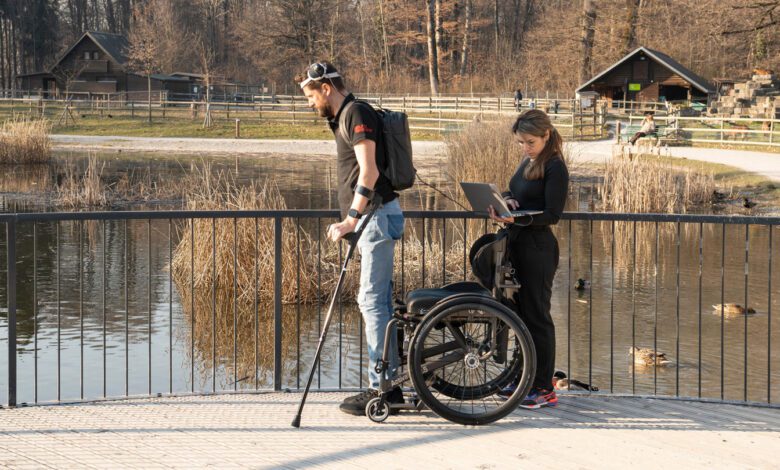Paralysed man walks again naturally after brain & spine implants, gives hope for medical scienc
The 40-year-old dutch man had an injury 12 years ago, now fixed through targeted electrical pulses.

Gert-Jan Oskam, 40, was told he would never walk again after breaking his neck in a traffic accident in China, but has climbed stairs and walked for more than 100 meters at a time since having the operation.
The electronic implants wirelessly transmit his thoughts to his legs and feet via a second implant on his spine. The system is still at an experimental stage but a leading UK spinal charity called it “very encouraging”.
“I feel like a toddler, learning to walk again”
Dr. Grégoire Courtine and colleagues from the Swiss Federal Institute of Technology in Lausanne developed and implanted a “brain-spine interface” that creates a direct neurological link between the brain and spinal cord. Implants in the brain track intentions for movement, which are wirelessly transferred to a processing unit that a person wears externally, like a backpack. The intentions are translated into commands that the processing unit sends back through the second implant to stimulate muscles.
Previous research has shown that targeted electrical pulses can stimulate areas of the leg needed to walk.
But this new technology allows for smoother movements and better adaptations to changing terrain because it reconnects two regions of the central nervous system that were interrupted because of a spinal cord injury, according to the researchers.
“What we’ve been able to do is re-establish communication between the brain and the region of the spinal cord that controls leg movement with a digital bridge,” said Prof Grégoire Courtine. He said the system could “capture the thoughts of Gert-Jan and translate those thoughts into stimulation of the spinal cord to re-establish voluntary leg movements”.
While the work is at an early stage, the researchers hope that future, miniaturised devices will help stroke patients and paralysed people to walk, move their arms and hands, and control other functions, such as the bladder, which is often affected by spinal cord injuries. Arm and hand movements may be more difficult, as they are more complex than walking.



